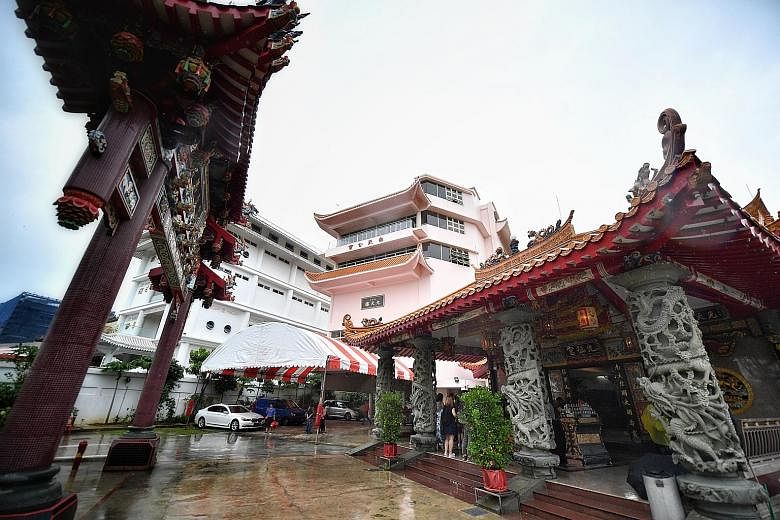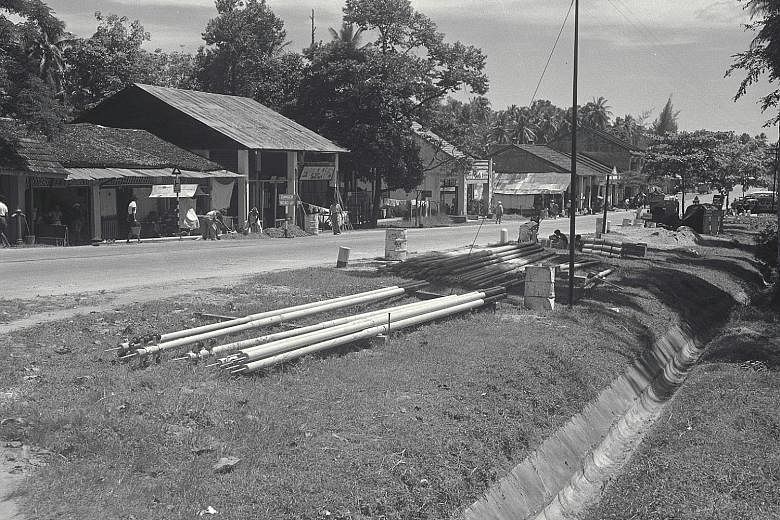It may be hard to imagine now but the concrete jungle of Tampines was a real forest and in the late 1800s, it was the hunting ground for tigers, which would carry off calves from a dairy farm in the area.
Even in the 1970s, the eastern suburb had pockets of woods where wildlife roamed. For instance, the New Nation newspaper in 1975 reported sightings of a panther - described as being the size of a large alsatian dog - stalking the area, eating wild dogs and farm chickens.
The animals and many of the original tempinis trees, after which the district is named, are now gone.
The contrast between old and new is highlighted in a National Heritage Board (NHB) trail of the Tampines estate which was launched yesterday. It is the 17th heritage trail by NHB.
Landmarks along the trail include a cluster of 12 temples in Tampines Link, Tampines Central Park and the Lorong Halus Wetland.
To enrich the trail experience, three bite-sized thematic routes have been curated for trailgoers to explore Tampines' heritage.
These include a first Green Spaces Trail - a cycling trail that takes visitors through scenic landscapes, such as sites where kampungs were once located.
Mr Alvin Tan, NHB's assistant chief executive of policy and community, said: "NHB is constantly exploring innovative ways to enrich the public's experience with each new heritage trail.
"The Green Spaces Trail was curated for Tampines because of its well-integrated green spaces and because cycling is a way of life for many of its residents. Through such thematic trails, we hope to encourage the public to explore and experience different aspects of Tampines' heritage according to their own interests."
The Tampines Heritage Trail also aims to celebrate lesser-known stories from the community.
Mr Alex Peck, 50, chairman of Kiew Sian King temple in Tampines Avenue, recalled how the old Tampines Road, built in 1847, was a winding, two-lane road lined with coconut trees and villages. Mr Peck, who grew up in the area, said: "We would harvest the coconuts to sell. The area had many fish ponds and vegetable farms. Our homes had zinc roofs and the walls were made of wooden planks for ventilation. It was very cooling at night."
Sharing about an old row of shophouses in Tampines Avenue which used to be part of the former Hun Yeang Village, Mr Peck said people used to flock there for the exotic cuisine which included fried wild boar and bats. "A man used to operate there till the early 1980s but it was expensive and I couldn't afford such food then. Instead I would eat home-cooked food that was shared among our family of 50 or so at the nearby Defu Village."
NHB's Mr Tan added that Tampines is a town of many firsts.
He noted that it was the first to pioneer town-planning innovations in the 1980s by integrating green corridors, the first regional centre set up to decentralise commercial activities from downtown business area to suburbs and the first and only town in Singapore to be conferred the World Habitat Award in 1991.
WATCH
Explore the Tampines heritage trail




